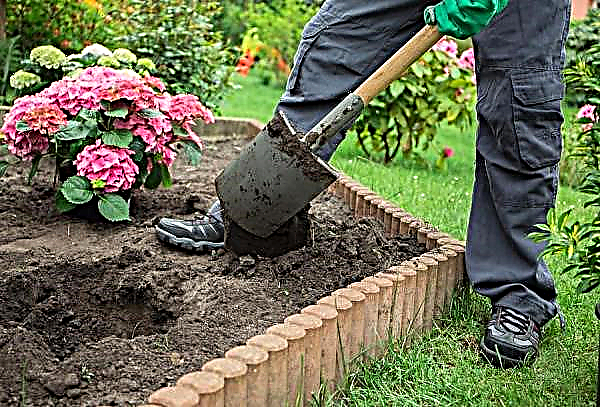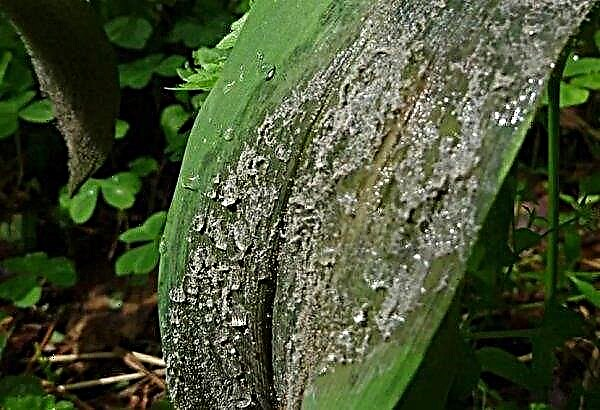Geoplastics in landscape design makes it possible to give the site an unusual look by forming hills and hills on it. Read on what advantages and disadvantages of this direction of architecture, as well as how to apply it yourself.
What is geoplasty in landscape design
Geoplastics is a type of vertical architectural planning. It is needed for the artistic transformation of reliefs by creating artificial forms with calculations of the aesthetic and functional requirements of the object.
Important! In the forest zone, the use of geoplastics is unacceptable, because artificial embankments from the soil and deep holes can harm trees.
First of all, geoplasty performs an aesthetic function, because with this technique you can build a pedestal, elevation, etc., which will hide the shortcomings of the site, isolate it from others, and can also become a route line along the personal territory.
This technique in landscape design is necessary to create:
- terraces;
- hills;
- shafts;
- amphitheaters;
- dams.
The second task of geoplasty is functionality, that is, the construction of horizontal planes of various sizes for leisure or sports activities. For example, it can be the construction of an elevation for skiing, the creation of an amphitheater for entertaining events with friends. Also, geoplasty has a technical function, which is to increase the level of comfort of the territory by constructing protective shafts from wind or flood dams.
Advantages and disadvantages of artificial hills
Among the clear advantages of geoplastic planning on the site is the creation of an original comfort zone. For example, this is the construction of an alpine hill, which will give the territory a special flavor, and if it is equipped with a small fountain and a gazebo next to it, you can easily get your own relaxation area after a long working day.
Did you know? In order to be able to grow plants such as bamboo and ground orchid on the site, it is necessary to create a special microclimate there. To do this, near the landings with these crops have an artificial reservoir.
The advantage of creating a hill on the site is the ability to hide behind it those places that spoil the beautiful view of the territory. So, behind a hill or a rampart it’s easy to hide a farm building or an outdoor shower, a cellar or a pile with compost to fertilize the garden.

The disadvantage of geoplasty is the impossibility of building a hill in the swampy and seismically active areas. Also, the construction of the hill is not carried out in areas where a large number of trees grow that cannot be cut.
How to make do-it-yourself geoplastics in landscape design
Vertical layout can be made by both specialists and beginners. Subject to all the rules and using the necessary materials, the gardener will easily independently build a hill or a shaft on the site. Before you begin work on the design of the site, you need to plan the location of the shafts and other structures in the territory. You also need to take care of the choice of tools and observe the step-by-step technology for creating a hill.
Layout
When planning the location of an artificial hill, it is necessary to take into account the fact that such structures can not be built:
- on loose soil that may sag;
- in marshland;
- in areas with high seismic activity;
- in the forest zone.

In addition, when planning the arrangement of hills on the territory, you should know that not every idea can be implemented on the site, because the principle of geoplastic design is a recreation of the natural outlines of the relief. If the territory is small, it is better to build a small rock garden, an alpine hill or in-depth flower beds. Bulky options with stairs and terraces are suitable for large spaces.
Important! The pond in the garden should be at the lowest point to create a more harmonious composition in the garden.
For flat sites, there are many options for geoplastics planning. For example, you can build submerged gardens, which are often found in old European gardens. Such a design will allow not only to get a lot of pleasure from the presence near the reservoir with flowers, but also to create a mini-garden for growing spicy herbs or other crops. Also on a flat terrain, you can build a hill in the form of a pedestal and install a fountain or sculpture on it.
 For slopes, you can choose the option of installing terraces with recreation areas, a children's or sports ground, or zoning the area with stone retaining walls up to 1 m high.
For slopes, you can choose the option of installing terraces with recreation areas, a children's or sports ground, or zoning the area with stone retaining walls up to 1 m high.
What materials and tools are needed
To create an artificial hill you will need a standard set of tools:
- roulette;
- meter line;
- level;
- pegs made of wood 50 cm long.
To build the hills on the site, use the barren soil. Vertical planners do not recommend taking peat or clay soil for the construction of shafts, because it absorbs moisture and settles over time.
 To cover the hill, you can use any kind of stone, for example, gravel or expanded clay. Also, a green lawn is suitable for him.
To cover the hill, you can use any kind of stone, for example, gravel or expanded clay. Also, a green lawn is suitable for him.
Creation technology
To make a hill on the site, you need to measure the entire territory and create a relief map. To do this, the whole area is divided into even squares (for example, 8 × 8 m), and in their corners are placed the prepared pegs, which are hammered so that their upper part is 30 cm. All measurements should be carried out from the highest point of the site to the lowest. The more complex the relief of the object, the smaller it is divided into smaller squares (for example, 4 × 4 m).
Did you know? In order to visually expand the area near the house, it is necessary to create an effect called in the landscape design “Alice in Wonderland”. It is achieved by planting on the territory of standard crops and dwarf plants.
After measuring the area on the territory of the selected square, you need to remove the soil layer to a depth of 30 cm. Next, the process of forming the hill begins, for which a layer of infertile soil is imported and poured onto the selected area. The embankment should have smoothly flowing lines and not stand out too much against the general background of the terrain. It is desirable that the angle of its slope was not higher than 45 °.
Video: creating a hill on the site
For the natural shrinkage of the earth, you will need to wait 6 months or use special equipment for tamping the soil. So that the soil on the hill does not slip, a geogrid or geogrid is installed under the upper 5-centimeter layer of the embankment. After the completion of all forming work, the hill is decorated with stones, lawn or flower beds.
Geoplasty in the landscape performs aesthetic and practical functions. It helps to hide the imperfections of the area, and also makes the site original and comfortable.












